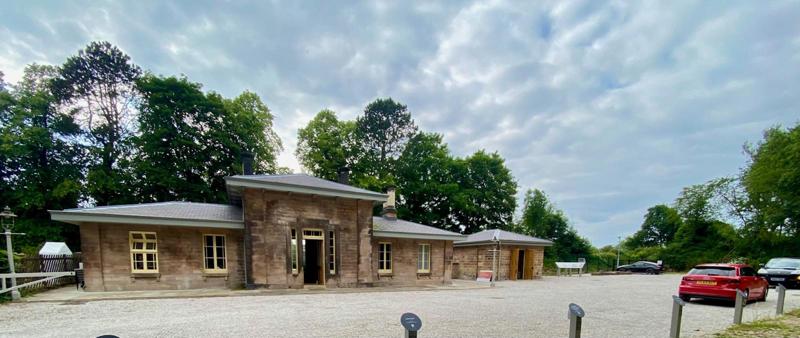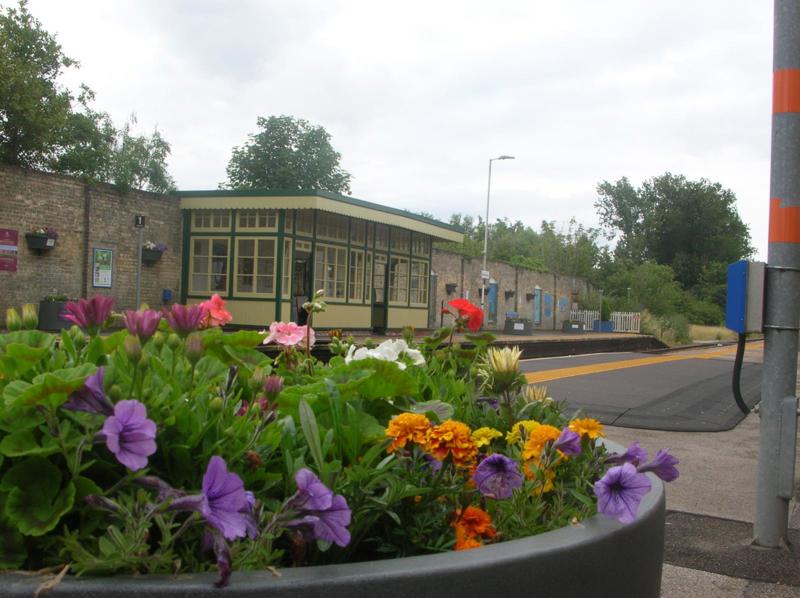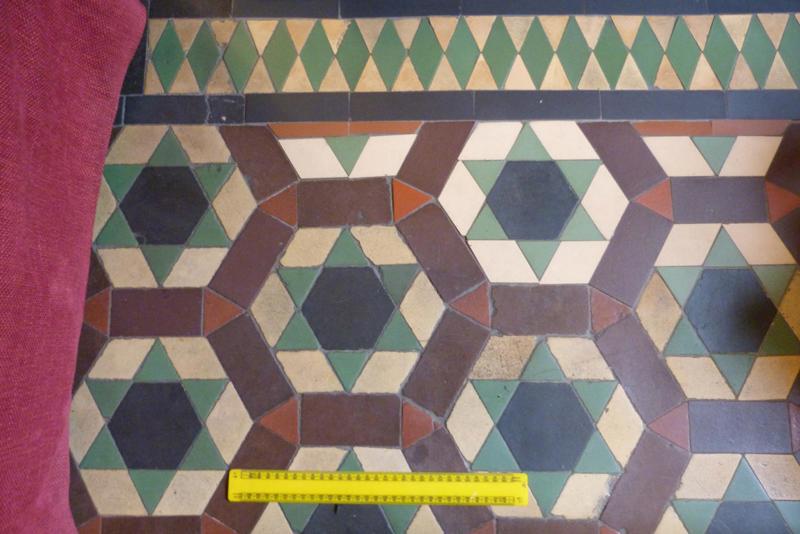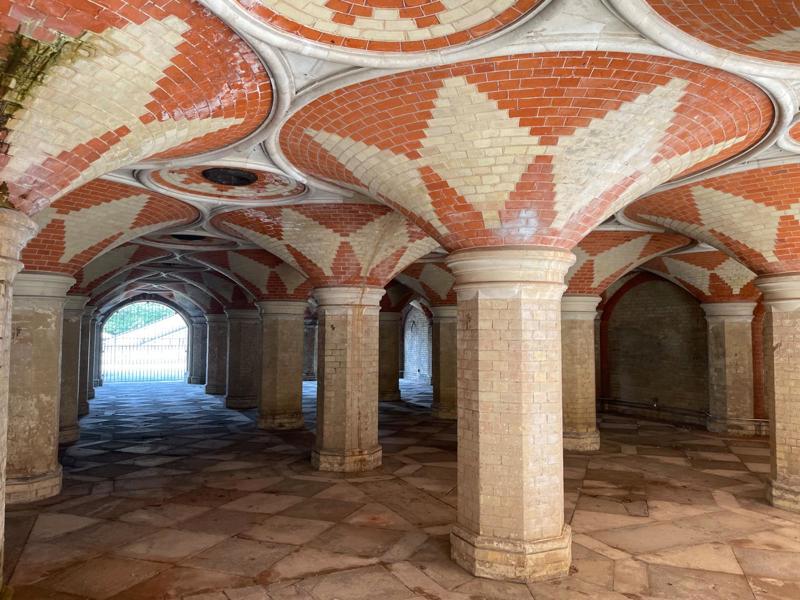The National Railway Heritage Awards enjoyed another successful competition this year, with a strong field of 58 entrants.
These spanned the length and breadth of the British Isles, with entries from all four nations.
The National Railway Heritage Awards enjoyed another successful competition this year, with a strong field of 58 entrants.
These spanned the length and breadth of the British Isles, with entries from all four nations.
The winners received their plaques, and the runners-up appropriate certificates, from Ptolemy Dean OBE, the architect and historic buildings advisor, at the awards ceremony held at the Merchant Taylors’ Hall, City of London on December 4.
The winning entries are described by Robin Leleux, who has retired after many years as a Trustee following recent charities legislation. He now writes as a Patron of the Awards.
THE GREATER ANGLIA AWARD FOR THE BEST OVERALL ENTRY 2024: WINGFIELD

Francis Thompson was a highly talented architect widely used in the formative years of Britain’s railways.
Many of his stations have not survived alteration or demolition following closure, so his gem at Wingfield, on the erstwhile North Midland Railway from Derby to Leeds, is a valuable survivor.
It is the classic case of a station requiring thorough restoration after almost total dereliction, owing to decay. It was an affront to many, which finally prompted the local authority, backed by Historic England, to compulsorily purchase the site. This enabled a thorough restoration to be carried out.
Externally, this most obviously involved roofs (new slates were obtained, as originally, from Penrhyn Quarry in North Wales), chimneys, doors and windows. The walls, fortunately, were fairly sound.
A writer in 1842 criticised the doorways into the ‘gents’, which were “so exposed … as naturally to shock female travellers … especially when the bell rings for the departure of the train”.
Derbyshire Historic Buildings Trust is the worthy winner of this Premier Award.
THE GWR OPERATIONAL ENHANCEMENT AWARD: BRICKET WOOD
The old LNWR opened its branch to St Albans in 1858 to serve that town, only for traffic to be lost to the new Midland Railway’s London extension ten years later.
The early wooden structure at Bricket Wood was replaced in around 1903 to cater for large excursion traffic heading to the adjacent permanent fairground.
More recently, the area has seen increasing housing (which enabled a reprieve from the Beeching-era closure proposal), and finally electrification.
However, the station became unstaffed in the late 1960s, leading inevitably to the building’s deterioration.
A fire and partial collapse of the front wall did not help, leaving the Bricket Wood Station Heritage Trust with a huge restoration job in its aim to restore the station building for community use - including a tearoom. But it was a job well done, bringing this award with it.
THE SOUTH EASTERN COMMERCIAL RESTORATION AWARD: STATION AGENT’S HOUSE
In the early days of railway promotion, it was not uncommon for companies to use existing buildings for their stations or offices.
Such was the case in Manchester, when George Stephenson spotted this plot for the terminus of the infant Liverpool & Manchester Railway. It was already occupied by a substantial town house, built in 1808 for a partner of an adjacent dye works.
Having bought the site, the station area was rapidly developed, with the viaduct carrying the approach lines at the back, the goods warehouse the other side of that, and finally the ’Coach Offices’ (soon called the Passenger Building) next door. The station agent occupied the house.
After BR closed the station in 1975, the site was developed as the Manchester Science and Industry Museum, with the house being used initially as museum offices.
Once that became unnecessary, the Landmark Trust stepped in to make the house suitable as a four-bedroom holiday let.
The picture shows the juxtaposition of the viaduct and Passenger Building (in buff stone) to the Station Agent’s House (in red brick).
THE TRANSLINK STRUCTURES AWARD: BARMOUTH VIADUCT
Building the railway along the western coast of Wales was fraught with difficulties, not least of which was the crossing of several river estuaries.
The most substantial of these was that of the Mawddach, with passengers hitherto having to walk up to 300 or 400 yards at low tide and change boats midway to walk along a gravel bank - “not very convenient for ladies and children”, according to the contemporary Picturesque Guide.
The substantial Barmouth Viaduct was completed in 1867, with a footpath later. It had 113 wooden and eight iron spans, the latter incorporating a rolling section to allow shipping passage.
This was replaced in 1906 with a steel swing bridge which, a century later, was life-expired.
Replacement of these steel spans on as near a like-for-like basis was considered to be the most effective solution, with modifications to incorporate changing materials and operational needs being sensitively incorporated.
The wooden spans, treated for worm some years ago, remain as the only major timber-built viaduct still in use by Network Rail.
This major work, which also incorporates part of the earlier steel fitments where appropriate, has taken nearly four years overall. It brings Network Rail this well-deserved award.
THE RAILWAY HERITAGE TRUST CONSERVATION AWARD: MARKET RASEN

By 1848, the Manchester, Sheffield & Lincolnshire Railway was living up to its title and opening lines in that county that had been promoted through Parliament by client companies.
These included the branch from Barnetby (on the main line west of Grimsby), down to Market Rasen and thence onto Lincoln, both opened before the end of that year.
The attractive small waiting shelter on Platform 2 dates from this time, making it a rare survivor given modern railway management’s penchant for replacing such structures with the ubiquitous bus-type shelters.
A non-railway use (apparently) in recent times was for schoolboys on ‘cross country’ to cut off via the station, rest awhile in the waiting room, before trotting along apparently having run the course.
Now, thanks to the careful and meticulous work carried out by Colt Construction Ltd, the Station’s Adoption Group has been able to make the waiting room a friendly and comfortable place, with artwork, a library, and a ‘fire’, along with two benches provided by the rail operator. Seen across the attractive flower planter, it certainly looks inviting.
THE NATIONAL HIGHWAYS AWARD FOR RESTORATION ON A CLOSED LINE: NEWTYLE
The Dundee & Newtyle Railway was one of the earliest in Scotland, dating from 1831.
The line was soon extended, but the original Newtyle station was not replaced by a more convenient one for the town until 1868, when it became a goods depot.
Closure came in 1955, after which it remained in use for some years as a warehouse, but then lay deserted for several decades.
Attempts to repurpose it began in 2008, but it was not until 2021 that planning consent was finally agreed for conversion to housing.
The aim of Sidlaw Building & Joinery Services was to preserve and restore the character and appearance of the utilitarian, little-altered mass and form of the building, while sensitively forming residential accommodation inside.
Six terraced dwellings have been sensitively formed, and along with restoration and some restitution work have brought the firm this award. The picture shows the south elevation.
THE NETWORK RAIL VOLUNTEERS AWARD: PENRHYN
It is axiomatic that heritage railways rely heavily on their army of volunteers to keep operating.
This raises the problem of how to accommodate them without using expensive B&Bs.
On the Ffestiniog Railway, the answer lies in both the custom-built hostel at Minffordd and its outpost at Penrhyn station.
Situated in the steep upper part of Penrhyndeudraeth village, the station is less popular as a joining point for passengers (Minffordd has parking and station facilities), so the traditional station building has not been needed operationally. As such, it has always been ideal for use as a volunteers’ hostel.
Over the years the building has deteriorated, especially externally, so the opportunity has been taken by the Ffestiniog Railway Society to give it a thorough facelift - replacing cladding, guttering, windows and facias as necessary from the railway’s own resources and using local contractors - as well as putting in much-needed thermal insulation.
The end result is to keep the building looking much as it does in early (late circa 19th century) photographs, and has brought the Ffestiniog Railway Society this award.
THE LONDON UNDERGROUND CRAFT SKILLS AWARD: ALTON

Not all heritage restoration work involves the high-profile restoration of a building’s exterior.
The awards competition regularly receives entries of a much smaller aspect of a building’s restoration, but none the less important - as is the case at Alton station in Staffordshire, on the erstwhile Churnet Valley Line from Leek to Uttoxeter.
Dating from 1849, the station is unusual for the area being in Italianate design, rather than the more usual Tudor or Jacobean.
It also possesses an historic tiled floor, being early Minton & Co. and to an unusual geometric pattern.
Naturally enough, some tiles had worn or broken. But the Landmark Trust, which has the care of the station as a lettable property, considered that conservation was best served by individual replacement of tiles, rather than losing the entire floor by full replacement.
Bespoke tiles were therefore ordered from a specialist firm in Stoke-on-Trent, and the photograph shows how well the new match with the old.
THE BAM NUTTALL PARTNERSHIP AWARD: CRYSTAL PALACE

Despite the naysayers, the 1851 Great Exhibition was a great success - such that on its stipulated closure, the magnificent edifice which housed it (the Crystal Palace) was dismantled and re-erected on a prominent hill in Sydenham (south London) as an exhibition centre and concert hall.
Naturally the Brighton company, as the nearest railway, quickly opened a branch in 1854 to serve it, and this was soon extended to become a through line.
Ten years later the London, Chatham & Dover Railway joined in with its own branch, which terminated in “a gem of Victorian architecture” (Edwin Course, London Railways) that included its own ornate passageway under the street to access the Crystal Palace itself.
Sadly, the Palace, decaying for years, was spectacularly destroyed by fire in 1936, spelling the end for the branch.
This finally closed in 1954, and the station was demolished in 1961, although the passageway survived (albeit without public access).
However local awareness of it remained, resulting in sporadic openings to the public and finally (from 2013) long-term plans for its conservation and restoration.
These finally matured in 2024, resulting in this award going to Bromley Council and the Friends of Crystal Palace Subway. The picture shows the polychromatic columns and fan-style vaulting of the antechamber.
THE AVANTI WEST COAST COMMUNITY AWARD: LLANELLI
Not all historic railway buildings are intrinsically attractive. And the goods shed offices at Llanelli, in south Wales, offer a good example.
The Grade 2 Listed building dates from 1875 and was extended, along with the adjoining goods shed, some 30 years later.
Considerable damage was then suffered during the ‘Llanelli Riots’ of 1911, which centred on the railway station.
BR closed the goods shed in 1965, but retained use of the offices for operational purposes for another 20 years.
After that, they were disused until conversion became possible for small business and community use - the latter being concentrated more in the adjoining goods shed space.
It is hoped that the commercial letting of the office space will fund both the ongoing maintenance of the historic structure, but also encourage the community use.
The Llanelli Railway Goods Shed Trust is to be commended for its work here.
A SPECIAL COMMENDATION: KILTIMAGH
The rural north-west of Ireland is not favoured economically, with outmigration still a problem. Any scheme which can attract tourism and so provide a local economic boost, including employment, is therefore to be encouraged.
Such was the thinking of Kiltimagh Tourism Association and Mayo County Council.
The railway serving Kiltimagh was the Great Southern & Western Railway branch from Claremorris to Collooney, linking the Westport and Sligo lines. It lost its passenger services in 1963 and finally its goods services in 1975, after which the station building became a derelict eyesore and the track (still in place) overgrown.
From 1993, Mayo County Council leased the station and restored it for community use.
Twenty years later came the idea of Velorail, something unique in the British Isles but operating variously in Europe.
With the enthusiastic support of both the Irish Government and CIE tours, some 13km (eight miles) of railway was leased, cleared and (as necessary) replaced, despite some ongoing local opposition which would prefer to see the track removed and the bed turned into a greenway.
Sixteen Railbikes have been procured, and public opening, based on Kiltimagh’s nicely restored station, was finally achieved in June 2023.
Thanks to IRD Kiltimagh CLC, this is a unique eco-tourism scheme with strong heritage implications which aims to assist the economic revitalising of Co. Mayo and this part of Ireland.
THE ARCH COMPANY AWARD FOR URBAN HERITAGE: TROON
In July 2021, fire devastated Troon station, totally destroying Platform 1’s buildings and damaging its pyramid canopy beyond repair.
Fortunately, the building was insured, which enabled proper rebuilding.
After full consultation with rail industry stakeholders, the local authority, environmental bodies and the local community, rebuilding externally to replicate the original wooden building (designed in 1892 by James Millar, who similarly designed the new station at Wemyss Bay) was agreed.
Internally, the layout would be reconfigured to meet modern operational and passenger requirements. The new pyramid platform canopy was fabricated off-site and craned in.
Network Rail has done a fine job here and well merit this award.
In this view, the new buildings and canopy are to the left. An Ayr-bound electric train calls at the southbound Platform 2 with its original buildings and canopy.
About the author: Robin Leleux, Consultant Editor
Robin Leleux is a writer, historian and retired employment consultant. His work includes Vol. IX The East Midlands of the Regional Railway Histories. Having become a judge for the NRHA in 1986, he subsequently organised the judging of entries for 20 years. In 2012 he became Chairman of the Awards Adjudicators.
Login to continue reading
Or register with RAIL to keep up-to-date with the latest news, insight and opinion.


















Login to comment
Comments
No comments have been made yet.